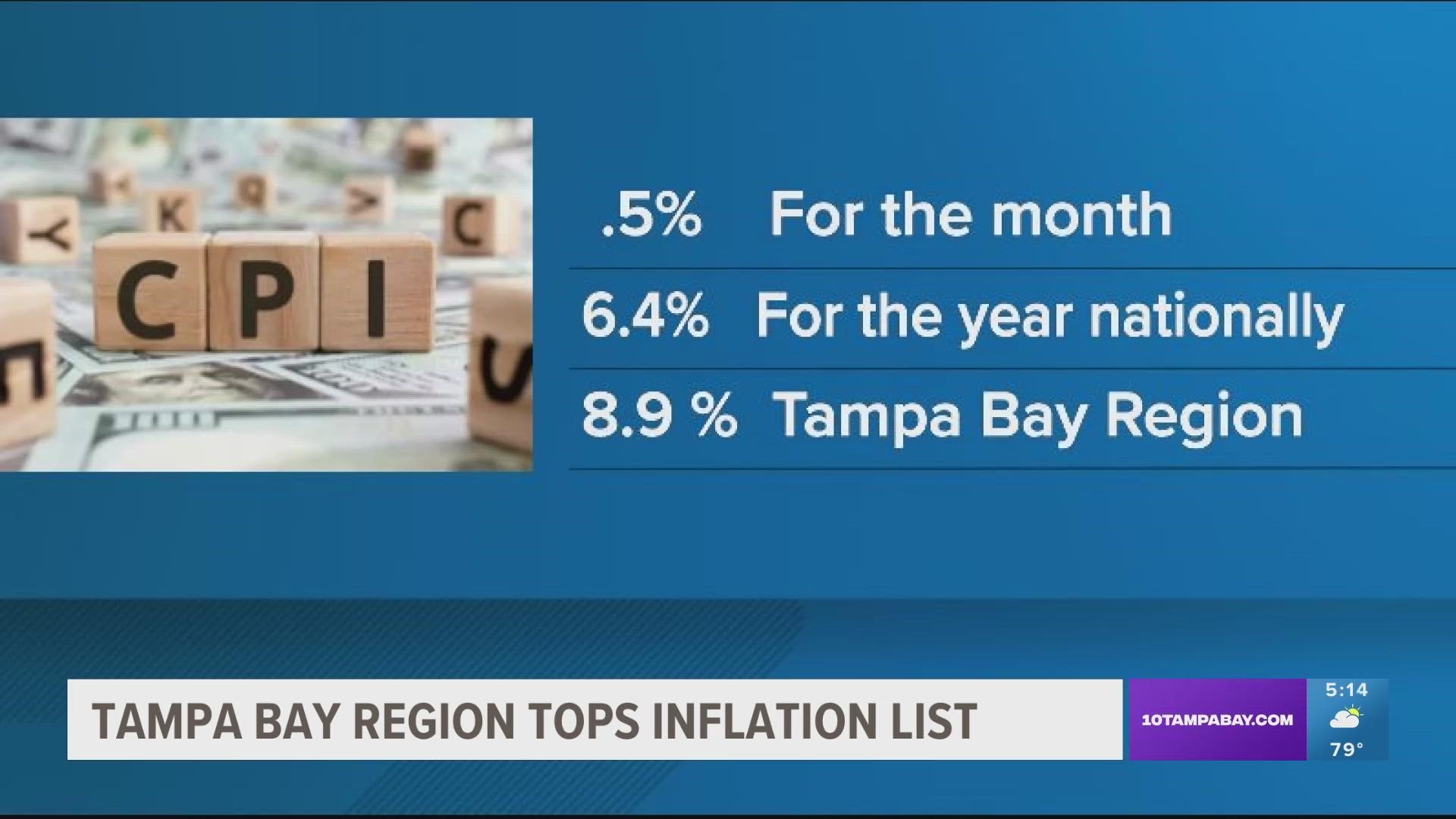TAMPA, Fla. — If you live in the Tampa Bay region, you probably don’t need a study to tell you prices are sky-high these days.
“Definitely housing and fuel and baby products,” Aaron Holland, a new father from the local area, said. “Those are the three main things.”
“Our property taxes have increased. Our insurance has tripled,” Mary Musser said, who lives in South Tampa.
Research from the personal finance website WalletHub confirms the challenges that both Holland and Musser are facing.
The Tampa-St. Petersburg-Clearwater region is No. 1 when you look at the consumer price index for last month — versus the two previous — and from a year ago.
“Well, it’s just less money in our pocket,” Eric Anderson, a Tampa Bay-area resident who goes food shopping with his family often, said. “You know, we still got to pay for rent, we’ve got to pay for the car, got to pay for schooling and got to pay for clothes.”
The feeling is mutual for another person who lives in the local area.
“You know, it makes everything more expensive it makes it harder to enjoy life a little bit more,” Marcus Moore, a plumber whose basic material costs have skyrocketed, said. “You can’t really do as many extracurriculars.”
There are signs inflation is slowing down.
Nationwide prices were up just .5% for the month and 6.4% over the past year.
But in the Tampa Bay area, that number was 8.9%.
USF Economics Instructor Mike Snipes says it’s a combination of factors most of us are probably familiar with — stubbornly high housing costs along with food and fuel.
Demand for the basics has been propped up, said Snipes, by low unemployment and an influx of new residents.
“It’s really the population growth that we’re seeing that a lot of other states aren’t seeing that’s keeping prices above the rest of the country,” Snipes said.
And while there’s not a lot we can do about the price of some items, Snipes suggests battling inflation where you can.
“Shop at the grocery store instead of going out for a meal, switch to store brand versus name brand, switch the type of foods that you’re consuming to more fruits and vegetables because they’re cheaper,” Snipes said. “Maybe increasing our intake of vegetables, because the price of vegetables and fruit, that’s actually below national averages."
Things don’t get much cheaper in our southern areas of the state.
The Miami-Ft. Lauderdale-West Palm Beach market was a close second behind us, followed by two areas in California and then the Dallas-Fort Worth area.
Economists say there’s no telling how long the Tampa Bay area will stay at the top of the inflation chart, but Snipes is optimistic we could see some relief soon.
“I would still expect inflation to come down, and maybe come down even a little quicker in Tampa Bay relative to the rest of the country, because our labor markets are stronger than the rest of the country," he said. "So there’s reason to be optimistic."
Holland and many other people in the local area are hoping things can get a little more back to normal.
“Hopefully, it can go down soon,” Holland said. “We need help. We’re all struggling out here.”

